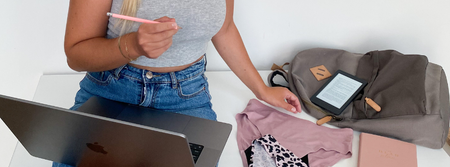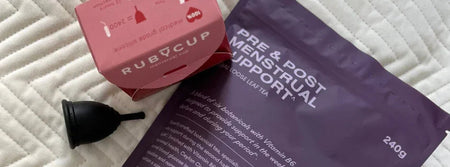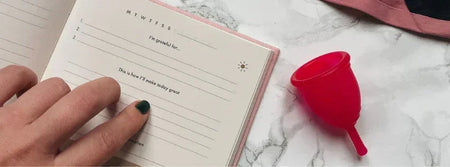This article is written by medical professional Dr. Alice Byram, whom you can read more about at the end of the article.
Blood clots in your period flow can be very normal and simply a natural part of your menstruation. Many people pass period clots at some point during their menstrual lifetime. It is usually nothing to worry about and can be managed by using the right menstrual hygiene product that suits your flow.
Signs Of Blood Clots During Your Period
- A blood clot is a heavy mass of menstrual blood that is being expelled from your body when you menstruate.
- Clots are most common during the heaviest part of your flow - which is usually the first few days.
- Blood clots look like chunky, jelly-like blobs that vary in size and color.
What Causes Blood Clots During Periods?
During menstruation, the thick lining of your uterus (womb) breaks away. As you menstruate, anticoagulants are released, these are natural blood thinners. During a heavy flow, blood is expelled faster and the anticoagulants may not have time to break down the blood. This is when the clots form.
It is completely normal, but pads and tampons usually don’t absorb clots that well. If that’s the case for you, consider using a menstrual cup instead.
Is My Period Blood Flow Normal?
It is normal for the flow of your period to change from one period to the next. During one period you may have clots and during the next not.
Blood clots in a period are generally bright or dark red and can sometimes be mixed in with your menstrual flow.
However, if your period is regularly very heavy or you are passing a lot of large, thick clots, then we recommend telling your doctor.
Are Darker Colors And Thicker Flows Normal In Menstrual Blood?
You may notice that your menstrual flow becomes a darker shade (this can range from dark brown to almost black) as you come to the end of your period. This is a normal color change. At this point there is hardly any blood left in the flow.
Read also: Why is my menstrual blood slimy?
When To See A Doctor
Although period blood clots can be normal, if any of the following are present you should see a doctor as soon as possible:
- Clots of a bigger size than are usual for you
- A period lasting longer than usual with clots
- If you have a temperature
- If you feel faint
- If the period blood clots smell different to usual
- If the period blood clots are a different colour or have other substances mixed in
- If you feel faint, light-headed or dizzy
- If you have severe stomach cramps with them
- If you think you could be pregnant (even if it is very early on)
Which Period Product Works Best With Clots?
As we mentioned above, menstrual clots are common and usually need no further medical treatment. An easy and clean solution is a menstrual cup. As the Ruby Cup holds the same as three super tampons, you don’t need to worry about sudden overflow. That’s why Ruby Cup is a great menstrual cup for heavy periods and clots.
Tampons and pads absorb blood flow but they can not absorb thick blood or menstrual blood clots, and can cause dryness and irritation. Menstrual cups are different, inserted into the vagina they naturally collect the flow and menstrual clots as they leave the body. They can be worn for up to 8 hours, and are completely reusable, so you just rinse and reinsert.
Making a note of the quantity and consistency of your flow is a good way of detecting any irregularities and having all this information will help your doctor make a diagnosis.
If you've never heard of a menstrual cup before, read "How to use a menstrual cup" to see how it works.
_________________________________
Written by Dr Alice Byram Bsc Med & Surg UMA MA Hons MML Cantab
Dr Alice Byram was born in England to a French-British family. Following on from a degree in Spanish from the University of Cambridge, she went to Spain to study medicine. On her return to the UK, she worked in Emergency Medicine for several years before recently returning to Barcelona.










